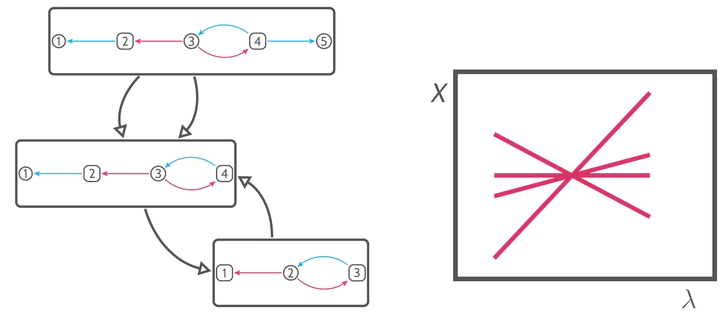Talk: Model independent phenomena in network dynamical systems

Abstract
Many dynamical systems in fields such as neuroscience (the workings of the brain), systems biology (metabolic systems) and robotics (robot swarms) exhibit the structure of a network: they consist of nodes (neurons, proteins, robots) with connections between them. The specific structure of these interactions can produce remarkably complex dynamics beyond that of the individual nodes. Prominent examples include synchronization and highly complex branching behavior in bifurcations, phenomena that are not found in dynamical systems without the structure of a network.
Modern dynamical systems theory aims at characterizing model-independent phenomena. That is, the goal is to describe geometrical or topological features of trajectories which are independent of the explicit equations of motion. Unfortunately, network dynamical systems are not well understood in that regard. The reason is that most of the established machinery of dynamical systems theory fails to distinguish between networks and general dynamical systems. Several mathematical tools that are tailor-made for network problems have been proposed recently. Strikingly, they have one thing in common: they exploit the algebraic nature of networks.
In this talk, I will give an overview over some recent results regarding the question which dynamical behavior and generic bifurcations are dictated by the network structure of a system. In particular, I will illustrate how structural and algebraic properties culminate in symmetries of the governing equations and how these can be exploited for (partial) answers. This includes classical symmetries but also more exotic concepts such as monoid and quiver representations.